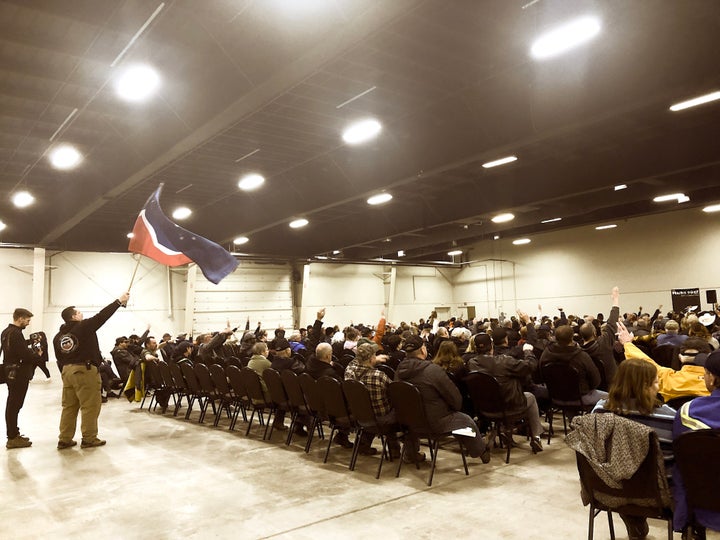
RED DEER, ALTA. — A few minutes into his speech to around 700 people at a late November Wexit Party rally in Red Deer, Sam Bell takes a turn.
The 24-year-old founder of the “Make Alberta Great Again” Facebook page is the third speaker of five scheduled for the night. He sports a hipster moustache and open floral shirt with a “Make Alberta Great Again” T-shirt underneath.
Until this point, Bell had been making the case for Alberta independence. He hit the usual points: equalization, a fair deal, the prairie provinces feel left out, a chance to get government right.
But then something shifts in his speech.
“The federal government we have in Ottawa is trying to disarm us. They are ignoring Canadian voices on the type and number of immigrants they want to come into the country,” Bell shouts, leaning into the podium. “They are introducing motions and legislation to curb free speech. They are increasingly anti-Christian, promoting drag queens to kids as well as telling kids there is no such thing as being a boy or a girl. And they are promoting a forced in-your-face LGBT agenda.”
The crowd, many sporting hats with “Wexit” and “Alberta Strong” on them, went wild.
I’m there, watching, back in my hometown for the first time in half a decade. It’s chilling to watch high school friends’ parents and old co-workers applaud so enthusiastically to homophobia.
But this is Wexit. And Red Deer is its epicentre.
***
The Alberta separatist movement is locked in a struggle to bring together the far-right ideologies of people like Bell and the economic and political unrest expressed by Albertans, and turn it into a cohesive movement.
Many see the October federal election results and the Prairie shutout of Justin Trudeau and the Liberal party as a sign that separatist sentiments are on the rise.
On paper, the Wexit movement and its accompanying political party — its name the short form of “western exit” — isn’t about stopping the so-called “LGBTQ” agenda. Nor is it about the allegations of “Marxist and socialist indoctrination” in our schools Bell and other speakers that night cited to equal bouts of applause from the crowd. Wexit and its founders claim simply to be about economic stability, western sovereignty and equalization payments.
WATCH: Justin Trudeau’s promise to Canadians who didn’t vote for him. Story continues below.
But like many populist movements — Yellow vesters, the rise of Donald Trump in the United States, the failed campaign of Maxime Bernier in this year’s federal election — the Wexit Party has a front-facing side promising progress for the everyday person and a dark far-right underbelly trafficking in conspiracy theories, xenophobia and homophobia.
The likelihood of the Wexit Party achieving its stated goals — electing members at both the provincial and federal level to pressure the Alberta government to hold a referendum on sovereignty — is a longshot. A pre-election poll from ThinkHQ showed support for secession among 25 per cent of respondents, while a post-election Ipsos poll showed support at 33 per cent.
It also doesn’t have the support of the province’s United Conservative Party premier Jason Kenney. Following the federal election, Kenney said that while he understood Western alienation, he supported national unity. And while his government has created a “fair deal panel” to explore possible options for making Alberta more independent, at meetings in Ottawa this week Kenney doubled down, affirming that he does not support separation, calling it “unreasonable.”
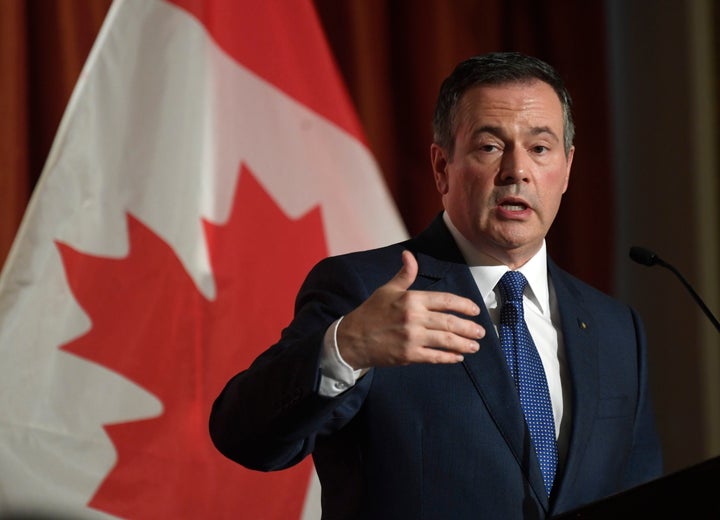
But still, the structure of a political party has allowed for the Alberta separatist movement to gain exposure and disseminate the less savoury beliefs of the people involved. Last month, Vice Canada reported on Wexit Party leader Peter Downing’s past involvement in spreading far-right conspiracy theories, including one about how the Trudeau government is involved in a secretive pedolphile ring and that the prime minister left the private school he worked at over a sex scandal — both of which have been disproven by multiple sources.
Vice also reported that Patrick King, a Wexit Party co-founder, regularly posts Facebook videos pushing racist, far-right conspiracy theories, including one where he talks about the “depopulation of the Anglo-Saxon race” by global forces seeking to marginalize white people because “they’re the ones with the strongest blood lines.”
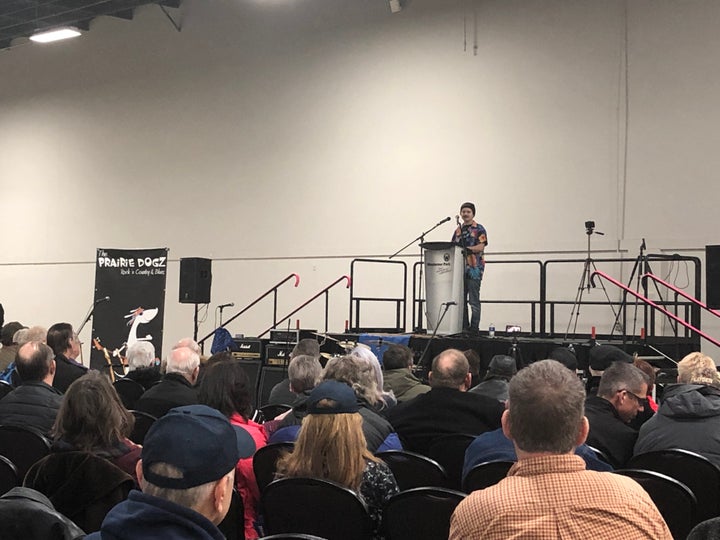
Separatist parties have come and gone across the Prairies before with very little impact. Over the past few decades there have been nearly a dozen provincial and federal political parties that have emerged preaching some form of western independence.
And while 700 people at a Red Deer rally is not an insignificant number, it’s also not earth-shattering. On that same day, over 1,000 people showed up to a remote Calgary airport hotel in the freezing cold to protest the governing United Conservative Party.
But many of the populist, far-right ideas behind Alberta separatism won’t go away easily. They’ve been around a lot longer than you might think.
***
It’s no coincidence that Red Deer has become an epicentre of separatism in Alberta. I should know — it’s my hometown.
My single mom raised my sister and me in Springbrook, a small hamlet outside the city and we went to school in town. In 2013, I graduated from high school in the room next door to where the November rally was held.
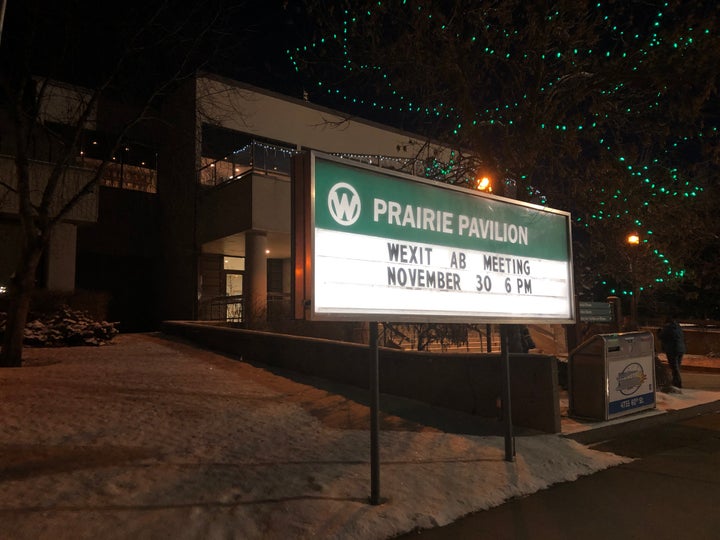
Growing up there, I wasn’t fully aware of its past and history. I only learned that it was one of the last sites of forced sterilization and eugenics in the province years later at a university course.
One thing I’ll never forget, though, is when someone burned a huge swastika into the courtyard of our school, with the gas seeping so deeply into the bricks that each one had to be replaced.
It happened overnight, while I was in high school, and they never caught the guy, though the principal at the time told our parents security footage showed an older white guy in dark clothes. For a long time I thought I’d made up the memory, until I reunited with a high school best friend last summer and she brought it up.
“Remember that giant burning swastika?” she said.
“Yes! I thought I’d made it up.”
“No, it definitely happened.”
In a phone call, a representative from the Red Deer Public School District confirmed that the event occurred “roughly how I recalled it,“with maintenance crews remembering the incident at the school, and how each brick had to be sand-blasted to remove the graffiti.
“One thing I’ll never forget, though, is when someone burned a huge swastika into the courtyard of our school, with the gas seeping so deeply into the bricks that each one had to be replaced.”
By no means is this indicative of every person or event in Red Deer. There are good people there across sectors, doing good and important work. But there are alarming trends in the area worth paying attention to.
According to 2016 census data, around 15 per cent of Red Deer’s population identifies as a visible minority. That’s compared to 24 per cent in Alberta overall. That number drops even lower for the rural areas surrounding the city, where many of the Wexit rally attendees drove in from. There wasn’t a single non-white-passing person in the room at the rally.
The nearby town of Eckville has a population of just over 1,000 — and not a single person identified as a visible minority in the 2016 census. Eckville is where high school teacher Jim Keegstra was charged under the Criminal Code of Canada in 1983 for teaching his students anti-semitic Holocaust denial material.
Keegstra’s case is the most high-profile of many similar instances with hate speech and groups in the province.
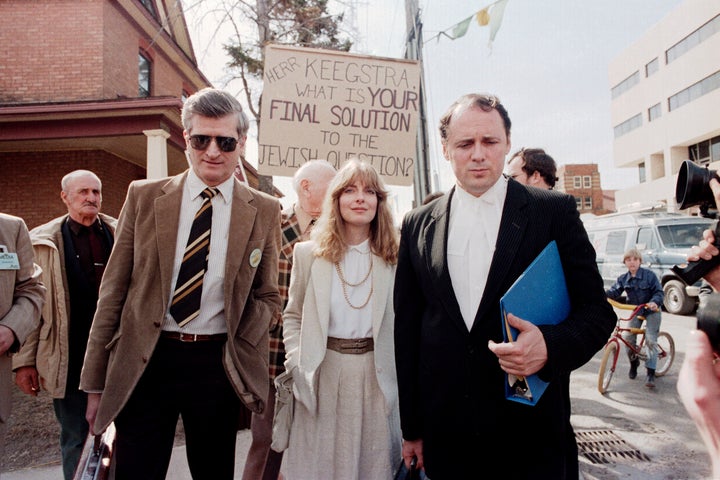
“From the settler colonizing of the West through its history of racist extremism in both fringe and mainstream political movements, Alberta has long been a comfortable place for many who hold negative views on its ever-increasing diversity,” University of Calgary professor Darren Lund, who worked as a high school teacher in Red Deer for 16 years, wrote in 2004.
Lund’s research notes that Alberta is the only Canadian jurisdiction on record to have granted a formal charter to the KKK — effectively making its white supremacist activities legal. Central Alberta was also home to strong chapters of hate groups like the Aryan Nation, one of the last outlets of the KKK and was a hotbed of eugenics-based forced sterilization operations.
Former Canada Aryan Nations leader Terry Long was born in Red Deer, and actually ran for federal office in the nearby town of Lacombe in the 1980s as a member of the Western Canada Concept Party — a separatist party not unlike Wexit. Other members of the party included Doug Christie, the lawyer who represented Keegstra and other neo-Nazis, including Holocauset denier Ernst Zundel and Nazi prison guard Michael Seifert.
That’s all to say: separatists and hate groups in Alberta share much of the same history.
***
To be fair, the people in that Wexit rally audience at the Red Deer convention centre were not Nazis, and since Wexit has entered the public consciousness, Downing has made an effort to smooth over the rougher edges of separatism and give the party a professional air.
“We will not allow ourselves to be divided. We’re going to make Alberta great again, and that is when we cut ourselves off from the leech that is Eastern Canada,” Downing told reporters at an Edmonton rally last month.
WATCH: Trudeau sits down with Calgary, Vancouver mayors to address frustration in the West. Story continues below.
But it does become a lot more difficult to preach unity when your party includes those unsavoury aspects. Even at the Red Deer rally, invited speakers couldn’t agree on their messaging. One — Mark Meincke, a military veteran and podcaster — argued the province didn’t need to separate but rather just move away from equalization payments. He got a mix of applause and boos from the crowd. Meanwhile, Downing continued to pound the drum of full separation.
After the rally, I spoke to Darren Esayenko, who stood at the back of the crowd waving a giant separatist flag throughout the night. He was involved in the Western Independence Association — the successor to Christie’s Western Canada Concept Party — in the 1980s. He said he’s had the pattern for the flag in his house for all of these years, waiting for separatist sentiments to re-emerge.
“This flag has been around since 1988,” Esayenko told me. “It’s obviously been off the mainstream because western separatism hasn’t been in the limelight until now. But I’ve actually had this very flag since 1995.”
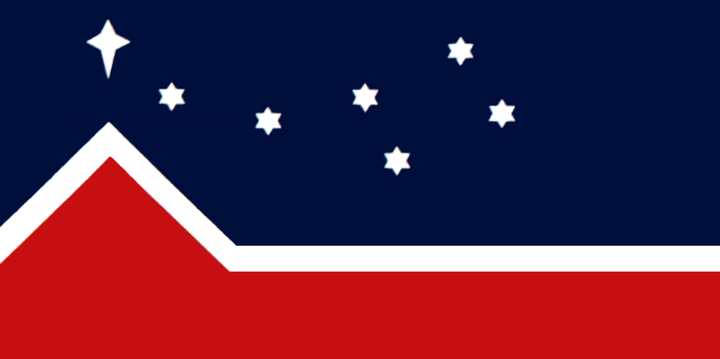
The flag includes stars representing each of the western provinces and territories, as well as an image of the prairie turning into the mountain. He says he’s in favour of full separation and forming a new country.
“It would not be like anything you would recognize now. It would be based on the power being disseminated to the citizenry, with us being the masters and the government being our servants,” he said.
The actual logistics of it have haunted Alberta separatism every time the movement seems to gain traction. Three provinces and two territories are not likely just to pick up and form a country.
The Wexit Party and movement behind it in the form we see it now started to coalesce a few years ago, but has gained national attention since this year’s federal election. The day after the vote, #Wexit was trending across the country as Albertans and others expressed their discontent with the results and concerns that Trudeau wasn’t giving them a fair shake.
When I arrived at the Red Deer event, half a dozen tables were set up to collect signatures to establish an Albertan wing of the party. Lily Sims signed, but told me she’d rather see Alberta stay as a province and not divide the country.
“What I’d like to see is what Quebec did. They made a lot of noise and got a lot of things,” she said.
Still, even as Sims called out Downing and other speakers for trying to “divide” the country, she has also bought into the Wexit ideal. The 45-year Red Deer resident and professed Trump fan tried to buy a “Make Alberta Great Again” hat for her daughter, but the merch table sold out within 10 minutes of the event’s doors opening. Sims settled for a Wexit Party lawn sign, which she told me will be under the tree for her daughter Christmas morning.
“We don’t need the laws to change,” she said of her hopes with separatist sentiment. “We want to be together but we also have to be treated fairly. And we’re not being treated fairly, we’re being squashed.”
***
The more radical ideas on offer at the Red Deer rally are already creeping into the discussion at the provincial legislature, says Lund.
“Our current education minister has stated she worries about teachers indoctrinating students in our schools,” he said. “In fact, this government has already rolled back protections for LGBTQ students in Alberta schools, through Bill 8, enacting into public policy the sentiments that our own premier has shared publicly in his previous work.”
For example, a so-called “conscience rights” bill that would allow doctors to refuse services like abortion or LGBTQ medical care was debated in the legislature last month. Though it was a private members’ bill, Kenney never spoke out against it.
“As much as we need to be vigilant of this kind of rhetoric ... we also need to be optimistic that there are so many people who share more progressive caring, compassionate values."”
- University of Calgary professor Darren Lund
Lund says that while we should worry about the connections separatism has to hate, in the province’s current political climate, it’s even more important to focus on the fight.
“As much as we need to be vigilant of this kind of rhetoric, aware of the impact it can have on mainstream politics and policymaking, we also need to be optimistic that there are so many people who share more progressive caring, compassionate values that seek to strengthen the collective wellbeing,” Lund said.
“That’s where we need to focus most of our energy.”
***
As Bell finished his speech at the Red Deer rally, I was standing off to the side in the sparsely populated media area with the two CBC Radio-Canada journalists. They had driven down from Edmonton and spent the night awkwardly shifting as the various speakers talked about the “fake news Trudeau-loving CBC” and defunding it.
But as Bell decryed the “LGBT agenda,” it was my turn to shift awkwardly, suddenly very self-conscious of my very queer haircut and glad I’d taken the rainbow pride pin off my coat. Old memories of being in the closet in high school resurfaced.
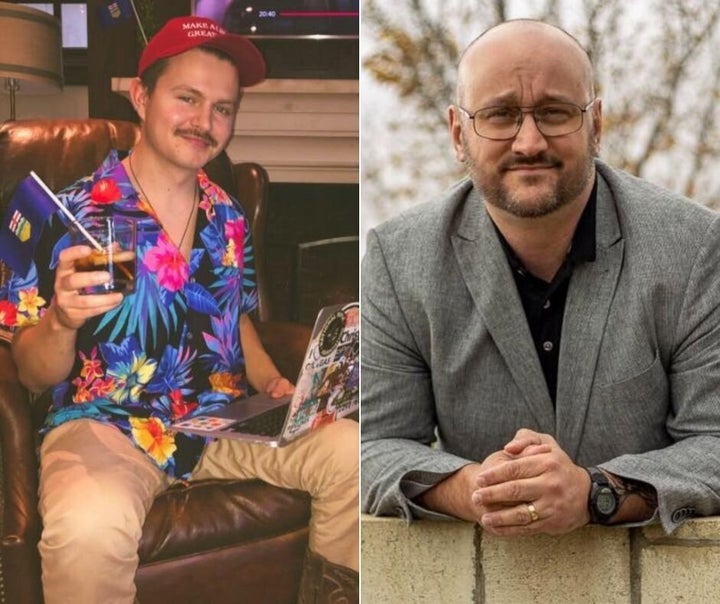
Over the course of his 20-minute speech, he touched on other familiar dog-whistle topics employed by far-right populist movements: Immigration. The “culture war.” Freedom of speech.
Bell praised U.S. President Donald Trump and spoke of the “great honour” he had to see him speak in person. By the end of his speech, he brings it back around to separatism, claiming he “would not rest” until he saw a “free” Alberta.
And as he stepped back from the podium, Bell received an enthusiastic standing ovation from nearly every person in the room. Downing took the stage to thank Bell and introduce the next speaker.
“Doesn’t it warm your heart and give you hope to see that we’ve got young men like Sam Bell to help make Alberta great again,” he said.
The crowd went wild.
UPDATE : This story was updated on Dec. 12 with confirmation from the Red Deer Public School District concerning the swastika graffiti.
CORRECTION: A previous version of this story noted that Sam Bell said “anti-person,” when in fact he said “anti-Christian.”